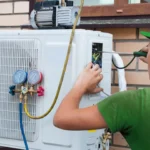In recent years, the senior safety technology marketplace has exploded, and quite frankly, it can be overwhelming to know what is valuable and what is just good marketing speak. Families tend to get lost in options that range from basic emergency buttons to sophisticated smart home systems that monitor everything from heart rate to sleep.
The truth is that not all safety technology is worth your time. Some devices truly save lives and enhance true independence, while others are simply elaborate equipment that sit in a drawer for their entire lives. Knowing which technology is truly valuable will allow families to make better decisions about where to put time and money.
Explore top-rated tech that keeps seniors safe, independent, and connected daily.
Emergency Response Systems that Really Matter
Personal emergency response systems are still, one of the most tried-and-true Senior Safety Technology for seniors. Emergency response systems have been around long before the “I’ve fallen and can’t get up” commercials. Modern emergency response systems are better than the earlier systems, which were bigger, took longer to get help, and were not reliable.
The basic idea is simple – if someone is in trouble, they press a button to be connected to a monitoring system. What has changed is that these monitoring systems are becoming more sophisticated. Many seniors and family members are studying options such as personal medical alert for elderly users, which combine emergency response services with additional features like GPS, fall detection, and two-way communication features.
The most important detail to remember about emergency response systems is that they are most effective when they are used. An advanced system that is never used due to complications or discomfort defeats the entire point. The best systems are those that blend into someone’s everyday life.
Fall detection is now a huge selling point in devices today, but a lot of the technology has varying degrees of accuracy. Some systems may have too many false alarms, and others may miss a true fall. The best systems will allow the user to adjust the sensitivity settings, and have a back up communication in the case of a failure.
Home Monitoring Technology
Smart home technology for seniors is trying to detect changes in their routine that could be along the lines of a problem. Motion sensors can clock normal activity patterns in the home and alert family members and friends if the sensor detects the pattern disparity. Door sensors can alert caregivers if a person leaves the house at unusual times and is particularly valuable for tracking memory issues.
The challenge with home monitoring systems is ensuring that they are helpful versus an invasion of privacy. Many seniors will object to Senior Safety Technology that makes them feel like they are being monitored and controlled. The most successful systems will allow for quiet fludity of operation until there is a signal of concern that warrants action.
Surprisingly, voice activated assistants have become very popular with older adults. These devices can make phone calls, set reminders for medications, regulate lights and thermistors, and answer questions without requiring someone to open an app or navigate around with an interface. Additionally, hands-free operation appeals to those with arthritis or limited mobility.
There are justifiable concerns over privacy. Families need to know what data is being collected and how it is used. Some older adults are okay with this trade-off for convenience. Other older adults prefer a more traditional approach.
Medication Management Solutions
Medication events present a significant safety issue when older adults take multiple medications. Medication management systems can be as low-tech as a pill box with reminders, or they can be as high-tech as programmable dispensing mechanisms that alert a family member if a medication has not been taken.
Basic electronic pill dispenser are available starting at the $50 to $100 range, and they can work well for individuals that just need reminding. More sophisticated medication dispensing devices are often several hundred dollars, but if your loved one is on a complicated regimen, the device is absolutely worth the cost.
The important thing to remember is to match the senior safety technology to person’s actual needs and abilities. A high-tech dispensing system will not help a person if programming and/or dispensing medication is confusing. In fact, a simple weekly pill organizer with reminders on smartphone could work as well as anything for reminding someone about their medication.
Wearable Safety Devices
Wearable safety technology has evolved so much from basic emergency alert pendant devices. Today’s wearables can track activity level, detect falls, monitor heart rate, and even monitor quality of sleep. Some devices can even sense a medical emergency and call in medical help by itself!
Smart watches built specifically for seniors have very simplified interface, and have emergency functions. Smart watches also provide updates to family members about activity, location, and health without being overly intrusive. Battery performance continues to be a factor, as any device that requires daily charging will not work for everyone.
The effectiveness of wearable devices relies on user acceptance first and foremost. Any device that is irritating, takes too long to charge, or has an interface that is unusable will end up in a drawer. The very best wearable safety devices are those that the user wants to wear each and every day.
GPS and Location Monitoring
For families that worry about seniors with memory issues getting lost, GPS location monitoring is a welcome peace of mind. Newer GPS trackers are much smaller and easier to conceal than they used to be, and the battery life has also improved quite a lot, too.
As an example, some systems interface with a smartphone and can notify if the senior wanders outside of a preset range. Other systems work independently, and family members can activate it to find the senior when they have not returned home as expected.
All kinds of privacy and dignity issues are important when thinking about location monitoring. These monitoring systems work best, when the senior knows she is being monitored and agrees to use the monitor. Rather than simply imposing monitoring as an additional control on the senior.
Making the Technology Investment
When selecting safety technology, the most important mitigating factor is not the price or features, it is simply “will the person use it?”. A simple system that is used every day is worth its weight in gold versus the multiple advanced systems that simply never get used.
Consider using the ‘start small’ approach before investing in a ‘complete’ system. Many families feel that basic emergency response systems have been the back bone of their safety precautions with the senior, adding to them as needs change over time.
Professional assessments can also help identify which technology use is going to be beneficial in specific situations. Occupational therapists and geriatric care managers can give an objective opinion, drawing conclusions based on the actual needs and preferences of the individual.
Ultimately, the goal is to identify technologies that support independence and not ways of controlling it. The best safety technology solutions are the ones that allow for the seniors to have confidence to remain active, while providing families with the right amount of peace of mind. When technology supports human judgement and relationships, then we can consider it a valuable tool for aging in place independently and safely.
Want to learn more? Our other posts are just a click away!






